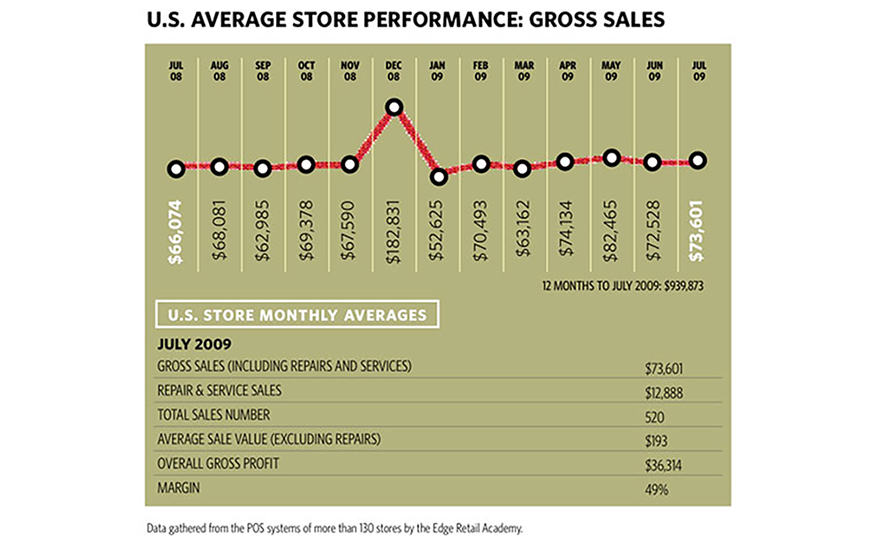YOU PROBABLY LIKE to think you’re running a lean ship, especially now that times are tough. But the truth is that many if not most U.S. jewelry stores are in much worse shape than 12 month ago. During the period from July 2008 to July 2009 the level of inventory being held by the average store increased 8 percent from $720,000 to $780,000 as average sales declined 13 percent. The slower turnover is also pushing more inventory into the aged category.
In the same way that your body needs to burn off the energy it gets from the food it eats, your store needs to “burn” its inventory at the same rate as it achieves sales. To accumulate inventory that doesn’t get sold is the same as eating more than you exercise. You get fat, and so does your store. Pretty soon that fat builds up and puts pressure on your system and that’s when the health can fail. Based on a decline in sales of 13 per cent, the level of average inventory should have fallen to $626,000 assuming markups were maintained, in order to keep the stock turn at the same level. This means the average store has $154,000 in extra inventory relative to sales than the same period 12 months earlier ($780,000-$626,000). To make matters worse, the stock turn (let’s call this the blood pressure) of most of these stores was way too low in the first place. Low stock turn to a store is like high blood pressure to a heart patient. You don’t want to go there!
Much of this inventory is poor inventory — the wrong items purchased at the wrong times. The average US jeweler carries less than 9 per cent of fast selling items — that’s items that sell in less than six months. A further 19 per cent is new inventory; these are items that have an opportunity to become fast sellers, and a large percentage of these will become aged inventory. That leaves only 28 per cent of the inventory of the average jeweler that customers are interested in; the remaining 72 per cent is aged. This would be like eating a nice healthy breakfast of fruit and nuts then spending the rest of the day snacking on fatty foods high in sugar. Do you think this will help your heart?
So how do you solve it? In the same way that a dietician and a doctor can measure your body and recommend the right foods to maintain your health, there is advice and data available on how your inventory level compares to the best performing stores and what inventory is selling well elsewhere that would work for you. Take the time to seek out best practices and don’t try to reinvent the wheel. If an item sells well for another store it will probably sell well for you. If other stores are achieving good stock turns then you can to. Like exercise, it just takes a commitment and the rewards will come in a leaner fitter business.

This story is from the October 2009 edition of INSTORE.
Advertisement